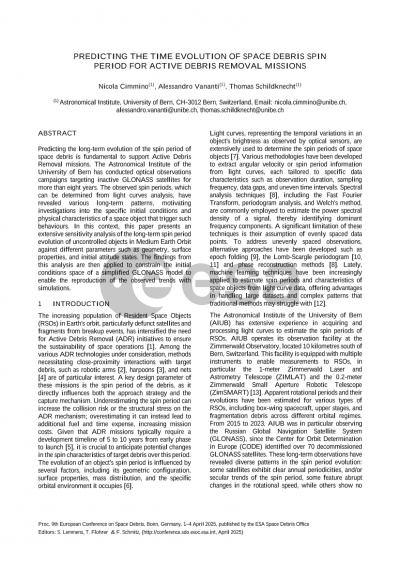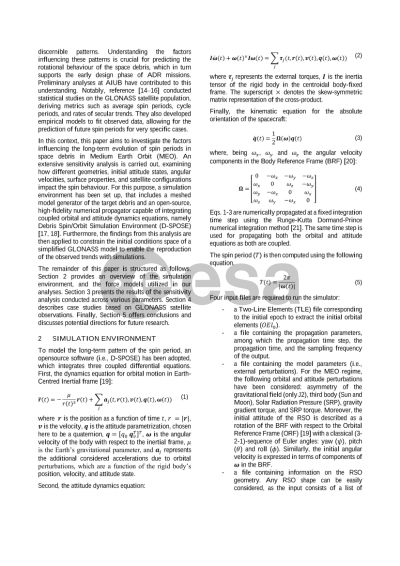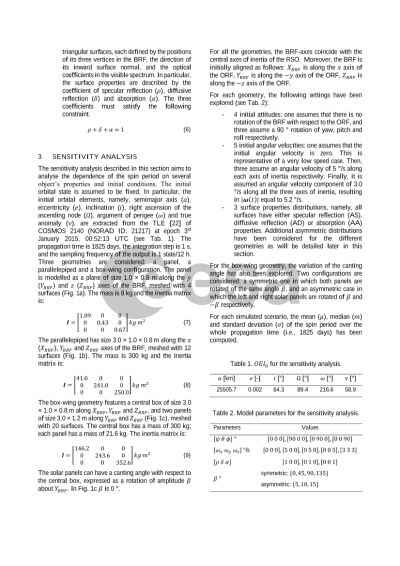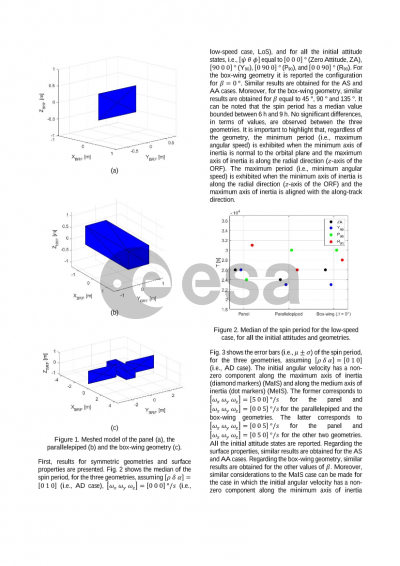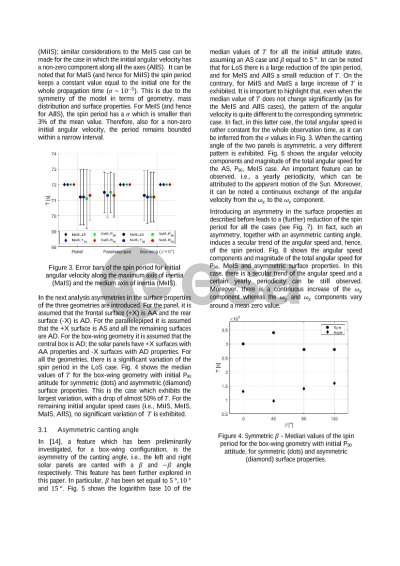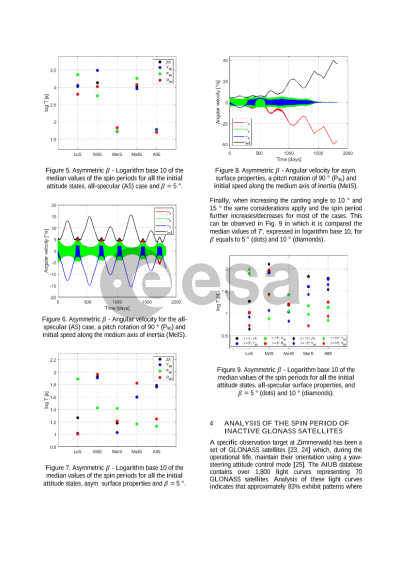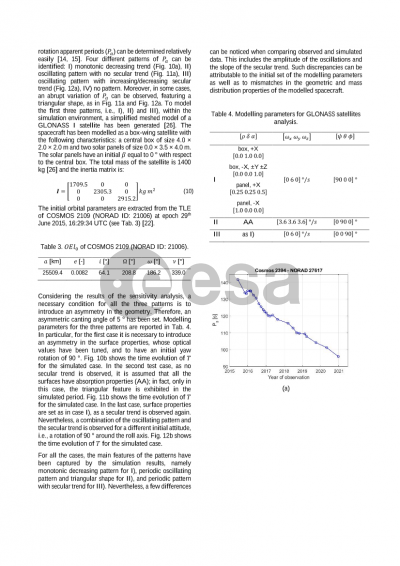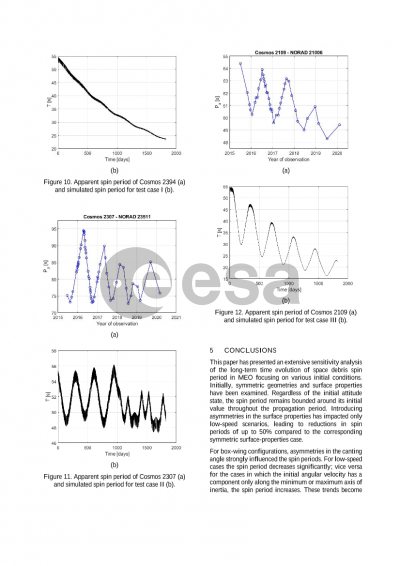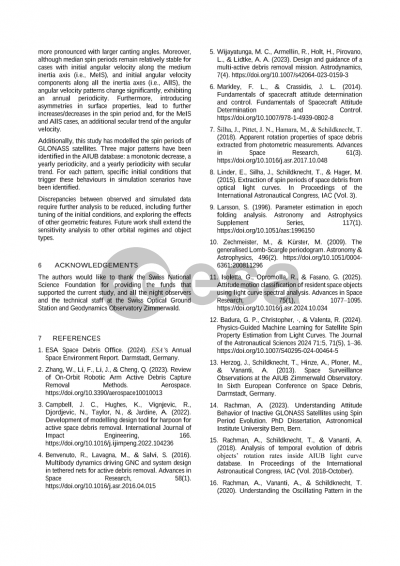Document details

Abstract
The spin period of space debris is a critical parameter in Active Debris Removal (ADR) missions, significantly impacting approach, capture, and stabilization processes. ADR missions typically require a development period of 5 to 10 years from initial design to launch. Within this timeframe, the spin period of space debris can evolve significantly. This evolution is driven by various factors, including environmental torques due to atmospheric drag, solar radiation pressure, Earth’s gravitational field, and impact with other objects. Additionally, physical properties of the debris, such as its shape, mass distribution, and surface characteristics (e.g., specular or diffusive reflection), also play an important role in influencing the rate of spin change. To address this issue, it is crucial to not only determine the current spin period, but also to predict the long-term evolution of the angular speed.
Light curves, i.e., the time evolution of an object’s brightness as seen from an optical sensor, are a widely utilized data source for retrieving a space object’s spin period. For this purpose, current literature proposes several approaches such as Fourier and wavelet analyses, the Phase Dispersion Minimization method, and machine learning-based techniques. However, due to limitations related to the Sun-object-sensor geometry, atmospheric conditions, and minimum observability window requirements, data on spin periods may be sparse or inconsistently available. This introduces further uncertainty into predictions of angular speed evolution.
In this context, this paper provides two main contributions to support long-term spin period prediction for ADR missions. First, an extensive sensitivity analysis is conducted to understand how different parameters influence spin evolution over time. This includes examining the effects of the initial attitude state and angular velocity, surface properties of the debris (e.g., specular or diffusive reflection), as well as several initial Sun-object relative geometries. Moreover, different object shapes (e.g., spherical, cylindrical, cubic, box-wing) and configurations (e.g., single/dual canting panels) are considered. The analysis extends across multiple orbital regimes to understand the role of different perturbations on spin rate evolution. To this aim, a CAD model of each configuration is generated using open-source software, and a high-fidelity numerical propagator is adopted, which integrates the coupled orbital and attitude dynamics equations. This analysis reveals patterns in spin evolution and provides statistical metrics to describe these trends.
The second contribution of this study is a methodology to predict the time evolution of a space debris spin period under realistic conditions. This approach assumes that only sparse spin period data and a coarse geometry of the space object are available. Unknown parameters, (e.g., initial attitude state and angular velocity) are tuned within the search space defined by the sensitivity analysis to best fit the observed data. This tuning enables the extrapolation of future rotational rates and, thereby, prediction of the spin evolution. Additionally, a Monte Carlo simulation is carried out to quantify the uncertainties associated with estimated spin periods at given epochs.
Finally, the study illustrates the practical application of this methodology using observational data from the Astronomical Institute of the University of Bern.
Preview
